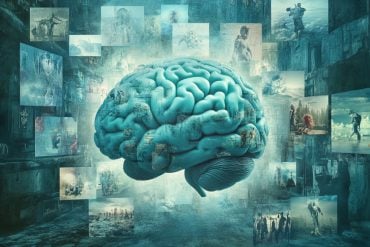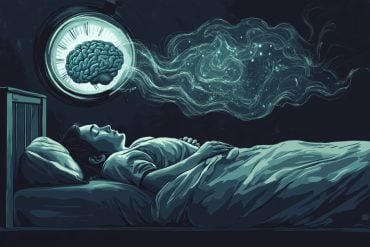Summary: A new study explores the potential of aesthetic chills, intense emotional responses characterized by shivers and goosebumps, as a novel intervention for depression.
The research enrolled 96 individuals diagnosed with major depressive disorder and exposed them to chills-inducing stimuli, resulting in significant positive shifts in self-acceptance and emotional breakthroughs.
These findings suggest that chills could offer a non-pharmacological approach to address core maladaptive beliefs associated with depression. However, further research is needed to validate these preliminary results and fully understand the underlying mechanisms.
Key Facts:
- Aesthetic chills, triggered by emotionally powerful stimuli, have shown promise in positively impacting self-acceptance and emotional breakthroughs in individuals with depression.
- Chills responses were associated with changes in emotional valence and arousal, potentially addressing anhedonia and lower reward sensitivity commonly observed in depression.
- While these preliminary findings are promising, larger studies and more objective measures are required to fully assess the therapeutic potential of chills in depression management.
Source: Neuroscience News
Depression, a global mental health challenge affecting over 300 million people worldwide, continues to be a major concern due to its limited response to current treatment modalities.
Pharmacological and psychotherapeutic interventions have proven effective for many individuals, but a significant portion of patients still grapple with the debilitating effects of this condition.
In the quest for innovative approaches to combat depression, emerging evidence points towards the potential of peak emotional experiences characterized by awe, transcendence, and meaning. Such experiences, in the form of aesthetic chills, have shown promise in rapidly reshaping maladaptive cognitive patterns deeply ingrained in individuals with depression.
This article explores a groundbreaking research paper that sheds light on the potential therapeutic benefits of aesthetic chills in depression management.
The Landscape of Depression
Depression is a multifaceted mental illness characterized by emotional numbness, lack of motivation, and diminished pleasure in life. Those affected often find themselves trapped in cycles of negative rumination about themselves and the world around them, leading to social isolation and a sense of hopelessness.

The neural underpinnings of depression involve dysregulation in reward-related pathways within the brain, particularly in regions like the ventral tegmental area (VTA) and the nucleus accumbens (NAc), both rich in dopaminergic neurons crucial for experiencing pleasure and motivation.
Such neural alterations contribute to core symptoms of depression, such as feelings of worthlessness, hopelessness, and the inability to envision a positive future.
Psychotherapy aimed at addressing core maladaptive beliefs plays a pivotal role in depression treatment, specifically focusing on self-image schemas. Recent interest has emerged in the use of psychedelic substances, such as psilocybin and LSD, for inducing profound experiences that challenge and transform these core beliefs.
Psychedelics have demonstrated efficacy in alleviating depressive symptoms, even in individuals resistant to traditional treatments. The subjective experience during these peak moments has been identified as a key predictor of long-term therapeutic outcomes.
However, the therapeutic use of psychedelics requires careful supervision, is time-consuming, and may carry contraindications and potential side effects.
As an alternative, researchers have turned their attention to aesthetic chills – intense emotional responses characterized by physical sensations like shivers and goosebumps triggered by powerful stimuli.
These chills may influence reward-related neural pathways and offer an avenue for modifying entrenched negative self-schemas rooted in early adverse experiences.
Aesthetic Chills: The Phenomenon
Aesthetic chills, often referred to simply as “chills,” represent a peak emotional response evoked by profoundly moving stimuli. These responses manifest as physical sensations, including shivers and goosebumps, and are associated with distinct neural activation patterns linked to reward and well-being.
Chills-inducing stimuli can encompass various forms, such as music, film, speech, and even secular or religious rituals. Preliminary evidence suggests that experiencing chills may lead to psychological insight, a crucial element of both psychedelic experiences and psychotherapeutic work.
The Role of Aesthetic Chills in Depression
New research delves into the potential of aesthetic chills as a non-pharmacological intervention for individuals with depression. The study enrolled 96 patients diagnosed with major depressive disorder and utilized a database of multimedia known to induce chills responses.
Participants’ emotional responses were assessed using the Emotional Breakthrough Inventory (EBI), while shifts in self-schema were measured via the Young Positive Schema Questionnaire (YSPQ).
Key Findings
The study’s findings suggest that chills-inducing stimuli have the potential to positively influence the core schema of individuals with depression, specifically impacting areas related to self-acceptance and shame. Notably, participants who reported experiencing chills displayed a significant increase in self-acceptance, indicating a reduction in shame.
Furthermore, these individuals reported a more substantial emotional breakthrough compared to those who did not experience chills. The intensity of chills correlated positively with the degree of emotional breakthrough, highlighting the connection between these phenomena.
Chills were also associated with changes in emotional valence and arousal, offering a potential means to address anhedonia and lower reward sensitivity, which are common features of depression. Interestingly, the increase in valence was mediated by the level of emotional breakthrough, suggesting that chills may enhance cognitive and emotional relearning through dopamine release and temporary synaptic plasticity.
Implications and Future Directions
The preliminary results of this study hold promise for the integration of aesthetic chills as a therapeutic tool in depression management.
Aesthetic chills have the potential to address core maladaptive beliefs, offering individuals an opportunity to break free from the shackles of shame and self-deprecation often associated with depression. Importantly, this intervention does not involve the use of pharmacological agents, making it accessible to a broader range of individuals.
However, it is essential to recognize the limitations of this research, including the relatively small sample size and the absence of clinician assessments at the time of intervention. Future studies should aim to validate these findings with larger and more diverse samples, employ objective measures of emotional response, and conduct controlled experimental designs.
In conclusion, aesthetic chills represent a novel and promising avenue for therapeutic interventions in depression.
This research opens the door to further exploration of the biological mechanisms underlying chills responses and their potential as a non-pharmacological means of inducing profound psychological insights and emotional breakthroughs.
While more research is needed to fully understand the scope of chills’ impact on mental health, these preliminary findings offer hope for a future where the power of awe-inspiring experiences can be harnessed to alleviate the burden of depression.
About this depression research news
Author: Neuroscience News Communications
Source: Neuroscience News
Contact: Neuroscience News Communications – Neuroscience News
Image: The image is credited to Neuroscience News
Original Research: Open access.
“Aesthetic chills mitigate maladaptive cognition in depression” by Felix Schoeller et al. BMC Psychiatry
Abstract
Aesthetic chills mitigate maladaptive cognition in depression
Background
Depression is a major global health challenge, affecting over 300 million people worldwide. Current pharmacological and psychotherapeutic interventions have limited efficacy, underscoring the need for novel approaches. Emerging evidence suggests that peak emotional experiences characterized by awe, transcendence, and meaning hold promise for rapidly shifting maladaptive cognitive patterns in depression. Aesthetic chills, a peak positive emotion characterized by physical sensations such as shivers and goosebumps, may influence reward-related neural pathways and hold promise for modifying core maladaptive beliefs rooted in early adverse experiences.
Methods
We enrolled 96 patients diagnosed with major depressive disorder. A validated database of multimedia known to elicit chills responses (ChillsDB) was used for stimulus presentation. Participants’ emotional responses were assessed using the Emotional Breakthrough Inventory (EBI), while shifts in self-schema were measured via the Young Positive Schema Questionnaire (YSPQ).
Results
The study found that chill-inducing stimuli have the potential to positively influence the core schema of individuals with depression, impacting areas of self-related beliefs. The associated phenomenology triggered by chills appears to share similarities with the altered states of consciousness induced by psychedelic substances like psilocybin.
Conclusions
These preliminary results suggest that the biological processes involved in aesthetic chills could be harnessed as a non-pharmacological intervention for depression. However, further investigation is necessary to comprehensively understand the neurophysiological responses to chills and to evaluate the practicality, effectiveness, and safety of utilizing aesthetic chills as a preventive measure in mental health care.






